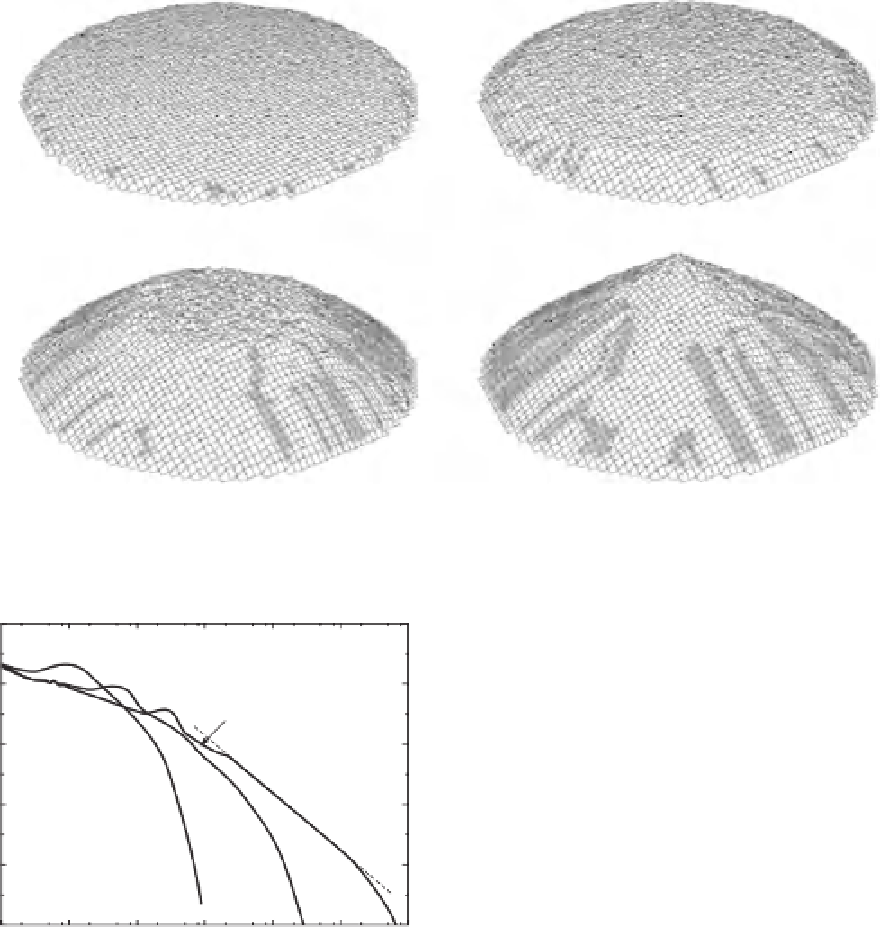Environmental Engineering Reference
In-Depth Information
Figure 16.6
Evolution of a sandpile in the improved sandpile model, starting from a flat surface. The last avalanches that have
occurred are marked grey.
realistic landscape consists of many slopes of various sizes,
and some of them may even be smaller than the largest
events in the landslide inventories. Thus, the distribution
of slope sizes may have an effect on the distribution
of landslide sizes, but we cannot tell whether the effect
is significant or not. Earthquakes are an example in the
context of SOCwhere fault sizes even varying over decades
in size do not strongly affect the power-law distribution
of the occurring events.
However, while earthquake models may be applied to
a fault system with a certain size distribution, we cannot
just run our sandpile model on a given topography. Over
long times, the surface would evolve towards a single pile,
perhaps with a quite irregular shape, but the complex
topography of many mountains and rivers would be lost.
Avoiding this problem would require coupled models
of tectonic uplift, fluvial erosion and landsliding, i.e.
sandpile dynamics. This approach would obviously not
conform to our aim of finding a simple model.
The simplest way around such a coupled model is
assuming a time-dependent threshold of instability. Let us
start from a given topography and assume that the thresh-
old decreases through time, so that the steepest regions
will become unstable successively. The implementation
of this idea is straightforward: at each step, we first search
the site with the steepest slope in downward direction
and set the threshold value to the slope of this site, so that
it just becomes unstable. The resulting avalanche follows
10
0
10
−
2
256 x 256
10
−
4
1024 x 1024
10
−
6
64 x 64
10
−
8
10
−
10
10
0
10
1
10
2
10
3
Avalanche volume
10
4
10
5
10
6
Figure 16.7
Probability density of the avalanches in the
improved sandpile model on grids of different sizes. The dashed
line illustrates a power law with an exponent
β
=
.
1
9.
than the power-law range of any landslide data set shown
in Figure 16.1. Is this just a coincidence or are landslides
similar to simple sandpile avalanches, although we started
from the idea that rockfalls might be? If so, where did we
switch fromrockfalls to landslideswhen trying tobring the
BTW (sandpile) model closer to nature in its basic rules?
Furthermore, even if the model captures the most
important parts of landslide dynamics, what is the role of
the landform? In contrast to our idealized sandpiles, each




Search WWH ::

Custom Search